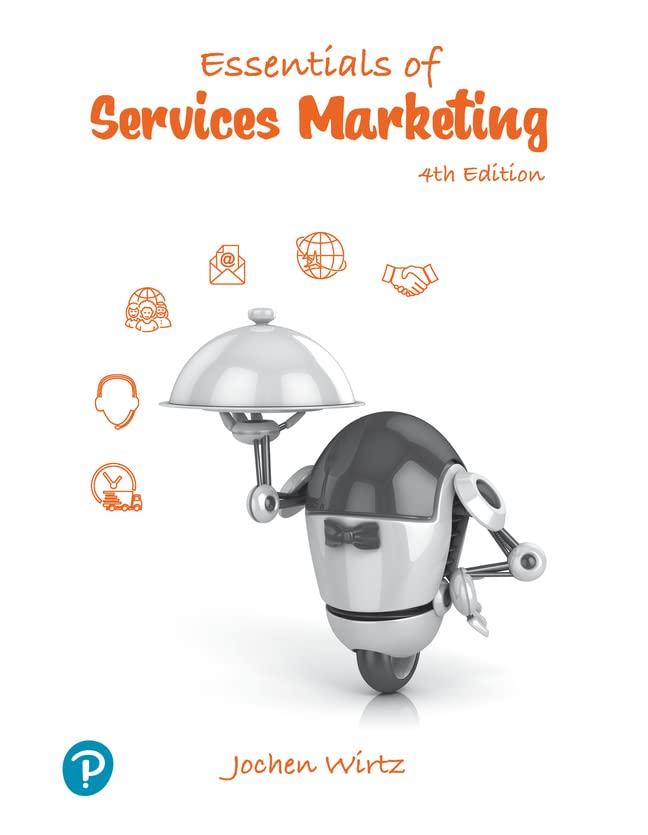NATIONAL LIBRARY BOARDS JOURNEY OF INNOVATION The National Library Boards (NLBs) vision is an ambitious one, to
Question:
NATIONAL LIBRARY BOARD’S JOURNEY OF INNOVATION
The National Library Board’s (NLB’s) vision is an ambitious one, to say the least. It lays out the aim to achieve “Readers for Life, Learning Communities, and a Knowledgeable Nation.” Correspondingly, it describes its mission thus: “We make knowledge come alive, spark imagination, and create possibilities.” To be able to deliver on its mission, NLB became one of the most innovative libraries around the world, enjoying unparalleled member satisfaction while showing the highest labor productivity of libraries globally. It has even been featured in academic research as an organization that has transformed itself to deliver cost-effective service excellence. Naturally, this massive endeavor could only be attempted with significant and sustained innovation as well as a massive deployment of technology.
NLB’s VISION
The Board’s innovation objectives were outlined in several master plans that envisioned the establishment of a worldclass library system that sought to meet the learning needs of a rapidly developing young nation. The Board evolved through four waves of transformation, each successive wave building on what was achieved through the previous wave’s master plan.
Wave 1: Library 2000
The focus of the early transformation effort in Wave 1 was to develop and expand the infrastructure of an adaptive, world-class public library system in Singapore that would be convenient, accessible, and useful. Several strategic undertakings were formulated and subsequently implemented, such as establishing a network of national reference libraries and a three-tier public library system of regional, community, and neighborhood libraries, as well as assisting in the setting up of school libraries and the development of specialized libraries for specific sectors. A coordinated national collection strategy was initiated to provide comprehensive coverage of Singapore’s literary and publishing heritage. This culminated in the core collection of the Lee Kong Chian Reference Library, with more than 300,000 items featuring material in various formats (microfilm, maps, audio-visual materials, ephemera, posters, and print publications) related to the political and economic history, literature, as well as social-cultural history of Singapore.
As Singapore developed into a global knowledge hub offering information on regional businesses and cultures, Wave 1 laid the foundation for safeguarding the documentary heritage and intellectual memory of the country, in keeping with its aim to build a literate, informed, and participative society.
Another strategic goal was to ensure that the libraries would offer quality service through market orientation. The innovative use of radio frequency identification (RFID)
technology–enabled self-service allowed customers to perform the check-out and return transactions themselves. As waiting times were minimized, customers could engage with the library more proactively. In a bid to remain relevant in an increasingly digital world, NLB launched the eLibraryHub, enabling users to access digital content easily from an online portal without having to be physically present at the libraries.
New strategic and symbiotic linkages between the government, businesses, and the general public were formed to ensure that NLB would meet the needs of Singaporeans in the 21st century. Through initiatives such as the Friends of the Library Programme, NLB involved community members, reaching out to volunteers whose personal preferences and abilities were matched with areas within its libraries. By organizing enriching programs for children from low-income families or delivering books to those unable to visit libraries, volunteers made a real difference and felt that they were a part of something greater than themselves.
STUDY QUESTIONS
1. What are the main transformation waves NLB has gone through?
2. How did NLB manage to create a strong culture of innovation and service excellence?
3. What did NLB do in terms of staff capacity-building in order to expand the propensity for innovation?
4. What was the role of technology and digital services in transforming NLB and improving the customer experience?
5. How did organizational strategy and culture drive NLB’s digital transformation and innovation outcomes?
6. What else could NLB do to continue staying ahead as a “library for life” so as to achieve its goals of “Readers for Life, Learning Communities, and a Knowledgeable Nation”?
Step by Step Answer:






